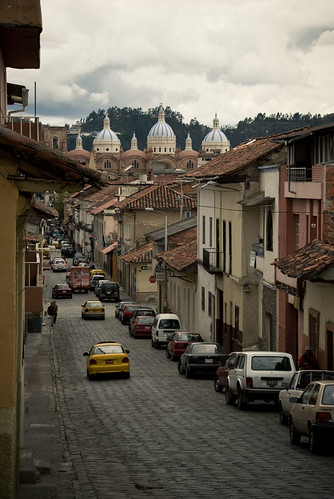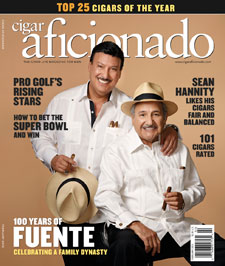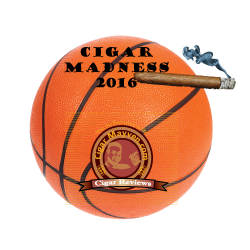Panama Hats – A Gentleman’s Accessory
These elegant straw hats are known throughout the world as Panama hats, but in Ecuador they’re simply called sombreros de paja toquilla — hats woven from the straw of the toquilla palm. Ironically, the Panama hat is not from Panama. It’s always been made in Ecuador. The misnomer stuck after the Ecuadorian straw hats were worn by workers building the Panama Canal for protection against the heat and sun. Ecuador has been making these hats for centuries, at least since the 16th-century Spanish Conquest, and possibly longer. Finding an authentic, hand-woven Panama hat is easier if you know what to look for. Let us give you a brief introduction to these beautiful hand-made straw hats so you can choose yours with confidence.
Artisans At Work
The Panama hat: it’s hailed the world over as the prince of hats. Its lightweight construction and natural breathability have rendered it the most practical solution for escaping the heat of the sun. But what is it about Panama hats that keeps dignified hat-wearers coming back, even after hundreds of years?

We believe the answer lies in the fact that each Panama hat is an entirely unique creation, with its author’s signature woven into the very strands of its being. For centuries, the fine Ecuadorian art of hand-weaving Panama hats has been passed down from generation to generation.
The process takes place in small mountain villages throughout the Ecuadorian Andes. Take a stroll around one of these towns, and you’ll see weavers all around you practicing this Panama hat trade that’s been passed down through countless generations. On the corner, at the riverbank, in front of the general store – Panama hat weaving is an integral component to these communities. To these artisans, Panama hats do not merely constitute a living, but a way of life.
The amount of attention given to each Panama hat is what truly makes the hat special. Weavers can complete a typical straw hat in one day, but they will spend several days weaving finer Panama hats. Our very finest Virtuoso Panama hat collection takes an experienced weaver several weeks to complete.
All in the Straw (Toquilla Straw)

Panama hats are made from a special straw, called toquilla in Spanish, that is native to Ecuador. While small amounts of this straw are exported to bordering countries, and some plants are exported for their ornamental characteristics, large quantities of this material simply cannot be found anywhere else in the world.

That’s one reason why 95% of all Panama hats are made in Ecuador.
The Panama hat’s signature toquilla palm grows naturally in the low-lying coastal plains of tropical Ecuador. Once harvested, the soft interior leaves are separated from the brittle outer parts of the plant. The sheaves are boiled in water, and then the palm ribbons are separated and dried. Once dry, the toquilla is ready to be selected and woven into straw hats.
No Two Panamas are Quite Alike
One distinctive feature of toquilla straw is that it cannot be woven by machine. The straw is rather fragile in its raw, natural state, so it must be woven completely by hand. Because of this, each and every Panama hat is unique. A Panama hat is truly a representation of the straw that composes it and the weaver who crafted it.
If it Ain’t Toquilla, it Ain’t a Panama!

You will find some so-called Panama hats that were mass produced by machinery. These are typically made from paper or synthetic fiber. These are not Panama hats.
You will see that they do not compare to the handwoven toquilla straw of a genuine Panama hat. They do not breathe well, and they do not wear as long.
Finishing Process for a Panama Hat

The Finishing Process
After each Panama hat is woven, it goes through a meticulous method of finishing. The multi-step process softens the toquilla fibers and results in an uncompromising Panama hat that will retain its classic styling for years of use.
Washing and Bleaching
The hat is then washed individually. Some Panama hats are bleached, others are left in their raw hue, showing a natural straw coloring. One way is not necessarily preferable to the other in terms or wearability or longevity; it’s simply a matter of personal taste.
Sun Dried
Panama hats are dried in the sun, and then ironed by hand to begin shaping them and provide enhanced form to the toquilla straw.
Shaping
Each hat is then further shaped through the light pounding a wooden mallet, which also softens the fibers and brings out the straw’s natural suppleness.
The hat is then blocked and sized. This is rarely done by hand. Instead, a large press is used to give the straw hat its final form and shape, and each hat must be pressed several times to permanently imprint the desired shape.
Few Ecuadorian villages have these blocks and presses. That’s one reason why most Panama hats are finished in Cuenca.
Final Touches
Finally, the Panama hat’s brim is trimmed and its edges sewn, and the entire hat is lacquered to ensure the hat maintains its shape. The very last step is to sew the outer band into place.
The way a hat is finished is one indication of its quality. The fineness of the weave is another. But even the very best superfino weave will quickly lose its form if improperly finished.
Before purchasing any Panama hat, make sure you understand how it has been finished, and where. And be assured that some of the finest, most beautiful, and most durable Panama hats are made in Cuenca.
Identifying an Authentic Hand-Woven Panama Hat
Today, many inexpensive hats that resemble Panama hats are exported from China, but these are not made by hand and often aren’t even straw hats. Instead, they are made of paper or raffia. These hats cannot be as comfortable or as durable as authentic, hand-woven Panama hats of toquilla straw.

Sure, one of these imitation Panama hats might be cheaper. It might even be a great looking hat. But it is the humanity and the singularity woven into it that sets the real Panama hat apart.
If a hat says Made in China, you can be certain it is not a Panama hat. Only if you see the words Made in Ecuador inside your hat can you be sure that it is a real Panama hat. The term Panama hat is, after all, not a loose idea; it is a strictly defined mark of excellence.
One must be vigilant when shopping online for true Panama hats. But if you’re well informed, your quest will not end in vain. (And we’ll give you a hint – you’ve come to the right place.)
Cuenca, Ecuador

Cuenca’s Culture of Handicraft

It’s little wonder our hand-woven Panama hats come from Cuenca, the city often called the art capital of Ecuador. Cuenca is an artist’s enclave. Crisscrossed by flowing rivers and quaint cobblestone streets, the lush beauty and artistic heritage of this colonial city provide natural inspiration for the many artists of Cuenca.
Eye-hand coordination is taught early in childhood, which explains the extraordinary number of Cuencan artisans. The diverse tradition of handicraft and Cuenca’s artisan base prompted the UN to designate Cuenca a “city of cultural distinction,” an award that fewer than 25 cities share.
Weaving is one of the many crafts unique to Ecuador; the art of Panama hat weaving is passed down from one generation to the next. Authentic Panama hats are individually hand-woven”each hat a unique expression of the artist who wove it. Weavers reside in and around Cuenca, where they have access to the straw indigenous to the region, hat finishers reliant on Cuenca’s infrastructure, and weather conditions perfectly suited for Panama hat weaving.
The Cuenca Connection
Every single Panama hat by Panador is hand-woven in Cuenca. In fact, well over 90% of the world’s Panama hats come from this incredible city.
Authentic Panamas are made from a unique straw that comes from a palm plant. The base of the Andes Mountains is the only place in the world where this palm grows in any quantity. Nearby Cuenca is uniquely situated for commercial weaving and finishing.
Cuenca first started Panama hat production in the 1850s. The oldest and largest Panama hat exporters are located in Cuenca. To properly block a hat, commercial hat finishers require dependable electricity and quality water to generate steam. Most commercially-finished hats are finished in Cuenca because the city is able to provide these utilities.
A Mountain Retreat
Greater Cuenca has a population of nearly half a million, making it the third largest city in Ecuador. Because Cuenca sits near the Equator and has an elevation of over 9000 feet, the temperature ranges from 50-85 degrees, an ideal climate for both tourism and Panama hat weaving. Very few hotels and homes have heating or air conditioning; these are simply not needed.
Cuenca’s perfect weather, beautiful surroundings, modern comforts, quality health care, delicious food, exceptional handicrafts and a thriving arts culture (all for an incredibly low cost) have prompted International Living magazine to name Cuenca a “Top Retirement Haven” for years. Expats flocking to Cuenca point out how exceptionally the city has preserved its colonial heritage. From renaissance cathedral domes to terracotta tile roofs and plazas filled with flowers, it’s no wonder Cuenca’s historic downtown has been recognized as a UNESCO World Heritage Site.
Cigars and Panama Hats

It is in the same air of tradition and heritage that the Panama hat and cigar are fashioned. Their confluence is no coincidence; both require keen attention to detail and a careful hand. But what is it that so closely brings the two together? Could it be their proximity of origin? Could it be a shared Latin charisma? Whatever the case may be, the cigar and the Panama hat have long had a romantic association.
You’ve often seen the image: an expert tobacconist on a Cuban plantation, carefully selecting the finest broadleaf while enjoying the solar protection of his Panama hat. It is an image so ubiquitous that one must wonder if it is no more than a romanticized gimmick. The Panama hat has much to do with the Central American sun, however, and could just as easily have been called (and sometimes is) the Havana hat. Its very name, in fact, comes from its popularity among sun-struck builders of the Panama Canal. Long before becoming the oligarch’s summer crown, the Panama was recognized as the only suitable hat for those whom the sun pursues.

Allow yourself to be swept away to the greenery of a far away, sunlit valley where the sounds of Rumba and the smiles of women encompass, where that Panama hat thrives in its most natural state. It is an experience not at all cliché, but in fact more authentic than any other. The hand-woven straw atop your head has returned full-circle back to the lush tropics of its origin.
Cigar Info
- Cigar Name:
- Brand:
- Size:
- Smoking Time:
- Source: Manufacturer/Distributor
- Price:






